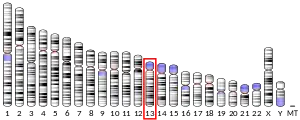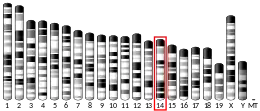| TMTC4 | |||||||||||||||||||||||||||||||||||||||||||||||||||
|---|---|---|---|---|---|---|---|---|---|---|---|---|---|---|---|---|---|---|---|---|---|---|---|---|---|---|---|---|---|---|---|---|---|---|---|---|---|---|---|---|---|---|---|---|---|---|---|---|---|---|---|
| Identifiers | |||||||||||||||||||||||||||||||||||||||||||||||||||
| Aliases | TMTC4, transmembrane and tetratricopeptide repeat containing 4, transmembrane O-mannosyltransferase targeting cadherins 4 | ||||||||||||||||||||||||||||||||||||||||||||||||||
| External IDs | OMIM: 618203 MGI: 1921050 HomoloGene: 32796 GeneCards: TMTC4 | ||||||||||||||||||||||||||||||||||||||||||||||||||
| |||||||||||||||||||||||||||||||||||||||||||||||||||
| |||||||||||||||||||||||||||||||||||||||||||||||||||
| |||||||||||||||||||||||||||||||||||||||||||||||||||
| |||||||||||||||||||||||||||||||||||||||||||||||||||
| |||||||||||||||||||||||||||||||||||||||||||||||||||
| Wikidata | |||||||||||||||||||||||||||||||||||||||||||||||||||
| |||||||||||||||||||||||||||||||||||||||||||||||||||
Transmembrane and Tetratricopeptide repeat containing 4 is a protein that in humans is encoded by the TMTC4 gene.[5] This protein crosses the plasma membrane 10 times, and resides in the ER lumen and cytosol. The predicted structure of the TMTC4 protein is a series of alpha-helices.
Gene
TMTC4 is located on chromosome 13 at 13q32.3. The gene is flanked by ADP ribosylation factor 4 pseudogene 3 (ARF4P3) on the left, and ribosomal protein S26 pseudogene 47 (RPS26P47) on the right. TMTC4 spans 4043 bp and has a total of 23 exons.[5]
mRNA
TMTC4 has seven isoform variants, the most common being isoform 1 at 4043 bp.[5]
| Isoform | Length (bp) |
| 1 | 4043 |
| 2 | 3833 |
| 3 | 3500 |
| 4 | 4217 |
| 5 | 4120 |
| 6 | 4037 |
| 7 | 3827 |
The 5’ UTR for TMTC4 is short and in many of the shorter isoforms, portions of this untranslated region are cut. In comparison, the 3’ UTR is long and is often complete across the seven isoforms.
Protein
Physical properties
The molecular weight for TMTC4 is 85.0 kdal, and there are no positive, negative, or neutral clusters of amino acids or charge runs exceeding the normal lengths. When looking at a distant ortholog (purple sea urchin) the molecular weight of TMTC4 is 85.5 kdal and there, again, are no charge runs, positive, negative or neutral clusters, or unusual spacings. There are strong similarities in protein composition across species. The isoelectric point for the domain of unknown function (DUF 1736) is lower than that of the protein overall.

| Domain | Amino Acids | Molecular Weight (kdal) | Isoelectric Point |
| Human TMTC4 | 760 | 85.0 | 9.135 |
| DUF 1736 | 75 | 8.6 | 4.123 |
| TPR repeats | 234 | 26.7 | 9.509 |
Domains

TMTC4 has ten transmembrane regions, all of them spaced within the first half of the protein.[6]
TMTC4 is layered with tetratricopeptide (TPR) repeat sequences that are a part of the TPR superfamily of proteins. DUF1736 is present upstream of the TPR region. A seven residue repeat (SRR) is located toward the end of the protein, and it is thought to encode a coiled-coil structure.[7] Another member of the TPR family, PFTA (protein prenyltransferases alpha subunit repeat), is located within the protein's TPR region and is believed to be involved in signal transduction and vesicular traffic regulation.[8] LSPR coagulation factor V, also a repeat motif, is located within the TPR region, and is thought to be a central regulator of hemostasis.[9]
Secondary structure
TMTC4 takes on a series of alpha-helix structures, especially within the TPR region, though there are a minimal amount of beta-strand structures spaced throughout the beginning half of the protein.[10]
Post-translational modifications
There are four predicted nuclear localization signals, each tagging the protein for nuclear import.[6] At the very end of the protein, however, there is a predicted ER retention signal which would prevent the protein from leaving the ER. The protein has three predicted N-glycosylation sites, potentially altering its structure and function and there are ten predicted phosphorylation sites, each a possible activation site for a regulatory mechanism.[6]
Expression
TMTC4 is expressed in all human tissues. The gene, however, is most highly expressed in the brain and in the spinal cord.[11]
Protein abundance seems to be lower than normal for TMTC4.
Regulation
There is one possible promoter for the TMTC4 gene, located in the 5’ UTR but before the start of the coding sequence.
Function
Currently the function of TMTC4 has not been characterized.
Interacting proteins
Possible interacting proteins are NRG1, PEX19, HERC3, TXNDC15, and COL1A1 . All of these were detected through affinity chromatography.[12]
| Protein Name | Known function | Location |
| Neuregulin 1 [NRG1] | mediates cell to cell signaling[13] | membrane glycoprotein[13] |
| Peroxisomal Biogenesis Factor 19 [PEX19] | cytosolic chaperone[14] | membrane receptor protein[14] |
| ECT And RLD Domain Containing E3 Ubiquitin Protein Ligase 3 [HERC3] | member of the ubiquitin ligase family[15] | cytosol[15] |
| Thioredoxin Domain Containing 15 [TXNDC15] | Not known | Not known |
| Collagen Type I Alpha 1 Chain [COL1A1] | triple helix collagen protein[16] | extracellular[16] |
Homology
Orthologs
Ortholog space for TMTC4 spans a large portion of evolutionary time. TMTC4 is present in mammals, reptiles, amphibians, birds, fish, and invertebrates. It is not present in plants, bacteria, archaea, or fungi.[17]
| Sequence Number | Genus and Species | Common Name | Accession # (protein) | Identity | Date of Divergence (MYA) |
| 1 | Heterocephalus glaber | Naked mole rat | EHB03258.1 | 88% | 94 |
| 2 | Rattus norvegicus | Brown rat | NP_001127886.1 | 90% | 94 |
| 3 | Myotis brandtii | Brandt's bat | EPQ01527.1 | 90% | 94 |
| 4 | Pteropus alecto | Black flying fox | XP_006909447.1 | 93% | 88 |
| 5 | Erinaceus europaeus | European hedgehog | XP_016040457.1 | 85% | 94 |
| 6 | Sorex araneus | Common shrew | XP_004614101.1 | 86% | 94 |
| 7 | Sus scrofa | Wild boar | NP_001239134.1 | 91% | 94 |
| 8 | Lipotes vexillifer | Baiji | XP_007461591.1 | 90% | 88 |
| 9 | Ailuropoda melanoleuca | Giant panda | XP_019650336.1 | 90% | 94 |
| 10 | Acinonyx jubatus | Cheetah | XP_014931490.1 | 93% | 94 |
| 11 | Tyto alba | Barn owl | KFV56414.1 | 85% | 320 |
| 12 | Charadrius vociferus | Killdeer | KGL87053.1 | 84% | 320 |
| 13 | Python bivittatus | Burmese python | XP_007425712.1 | 81% | 320 |
| 14 | Anolis carolinensis | Carolina anole | XP_008105174.1 | 82% | 320 |
| 15 | Xenopus tropicalis | Western clawed frog | NP_001121486.1 | 38% | 353 |
| 16 | Nanorana parkeri | Nanorana parkeri | XP_018432106.1 | 73% | 353 |
| 17 | Callorhinchus milii | Australian ghostshark | XP_007885231.1 | 68% | 465 |
| 18 | Crassostrea gigas | Pacific oyster | XP_011422949.1 | 50% | 758 |
| 19 | Strongylocentrotus purpuratus | Purple sea urchin | XP_011670776.1 | 49% | 627 |
Paralogs
Paralog space for TMTC4 spans the gene family TMTC. There are four genes in this gene family: TMTC1, TMTC2, TMTC3, and TMTC4. TMTC1 and TMTC3 split from TMTC4 about 1200 million years ago, while TMTC2 split from TMTC4 1400 million years ago. Both of these events happened somewhere between invertebrates and plants.
References
- 1 2 3 GRCh38: Ensembl release 89: ENSG00000125247 - Ensembl, May 2017
- 1 2 3 GRCm38: Ensembl release 89: ENSMUSG00000041594 - Ensembl, May 2017
- ↑ "Human PubMed Reference:". National Center for Biotechnology Information, U.S. National Library of Medicine.
- ↑ "Mouse PubMed Reference:". National Center for Biotechnology Information, U.S. National Library of Medicine.
- 1 2 3 "TMTC4 transmembrane and tetratricopeptide repeat containing 4". Entrez Gene.
- 1 2 3 "Motif Scan". Swiss Institute of Bioinformatics. Retrieved 2017-05-04.
- ↑ Grigoryan G, Keating AE (2008). "Structural specificity in coiled-coil interactions". Current Opinion in Structural Biology. 18 (4): 477–83. doi:10.1016/j.sbi.2008.04.008. PMC 2567808. PMID 18555680.
- ↑ Zhang H, Grishin NV (August 1999). "The alpha-subunit of protein prenyltransferases is a member of the tetratricopeptide repeat family". Protein Science. 8 (8): 1658–67. doi:10.1110/ps.8.8.1658. PMC 2144414. PMID 10452610.
- ↑ "Coagulation factor V, LSPD (IPR009271)". InterPro. EMBL-EBI. Retrieved 2017-04-27.
- ↑ "I-TASSER results". I-TASSER. University of Michigan. Retrieved 2017-04-27.
- ↑ "2906582". GEO Profiles. NCBI. Retrieved 2017-04-27.
- ↑ Huttlin EL, Ting L, Bruckner RJ, Gebreab F, Gygi MP, Szpyt J, et al. (July 2015). "The BioPlex Network: A Systematic Exploration of the Human Interactome". Cell. 162 (2): 425–40. doi:10.1016/j.cell.2015.06.043. PMC 4617211. PMID 26186194.
- 1 2 "NRG1 Gene". GeneCards. Retrieved 2017-04-27.
- 1 2 "PEX19 Gene". GeneCards. Retrieved 2017-04-27.
- 1 2 "HERC3 Gene". GeneCards. Retrieved 2017-04-27.
- 1 2 "COL1A1 Gene". GeneCards. Retrieved 2017-04-27.
- ↑ "BLAST: Basic Local Alignment Search Tool". NCBI. Retrieved 2017-04-27.
Further reading
- Hartley JL, Temple GF, Brasch MA (November 2000). "DNA cloning using in vitro site-specific recombination". Genome Research. 10 (11): 1788–95. doi:10.1101/gr.143000. PMC 310948. PMID 11076863.
- Christian SL, McDonough J, Liu Cy CY, Shaikh S, Vlamakis V, Badner JA, Chakravarti A, Gershon ES (May 2002). "An evaluation of the assembly of an approximately 15-Mb region on human chromosome 13q32-q33 linked to bipolar disorder and schizophrenia". Genomics. 79 (5): 635–56. doi:10.1006/geno.2002.6765. PMID 11991713.
- Rual JF, Hirozane-Kishikawa T, Hao T, Bertin N, Li S, Dricot A, Li N, Rosenberg J, Lamesch P, Vidalain PO, Clingingsmith TR, Hartley JL, Esposito D, Cheo D, Moore T, Simmons B, Sequerra R, Bosak S, Doucette-Stamm L, Le Peuch C, Vandenhaute J, Cusick ME, Albala JS, Hill DE, Vidal M (October 2004). "Human ORFeome version 1.1: a platform for reverse proteomics". Genome Research. 14 (10B): 2128–35. doi:10.1101/gr.2973604. PMC 528929. PMID 15489335.
- Wiemann S, Arlt D, Huber W, Wellenreuther R, Schleeger S, Mehrle A, Bechtel S, Sauermann M, Korf U, Pepperkok R, Sültmann H, Poustka A (October 2004). "From ORFeome to biology: a functional genomics pipeline". Genome Research. 14 (10B): 2136–44. doi:10.1101/gr.2576704. PMC 528930. PMID 15489336.
- Tao WA, Wollscheid B, O'Brien R, Eng JK, Li XJ, Bodenmiller B, Watts JD, Hood L, Aebersold R (August 2005). "Quantitative phosphoproteome analysis using a dendrimer conjugation chemistry and tandem mass spectrometry". Nature Methods. 2 (8): 591–8. doi:10.1038/nmeth776. PMID 16094384. S2CID 20475874.
- Mehrle A, Rosenfelder H, Schupp I, del Val C, Arlt D, Hahne F, Bechtel S, Simpson J, Hofmann O, Hide W, Glatting KH, Huber W, Pepperkok R, Poustka A, Wiemann S (January 2006). "The LIFEdb database in 2006". Nucleic Acids Research. 34 (Database issue): D415-8. doi:10.1093/nar/gkj139. PMC 1347501. PMID 16381901.



